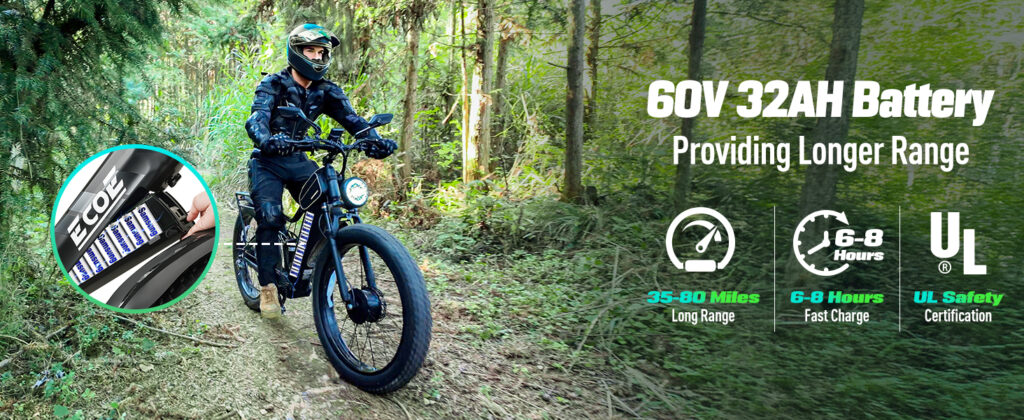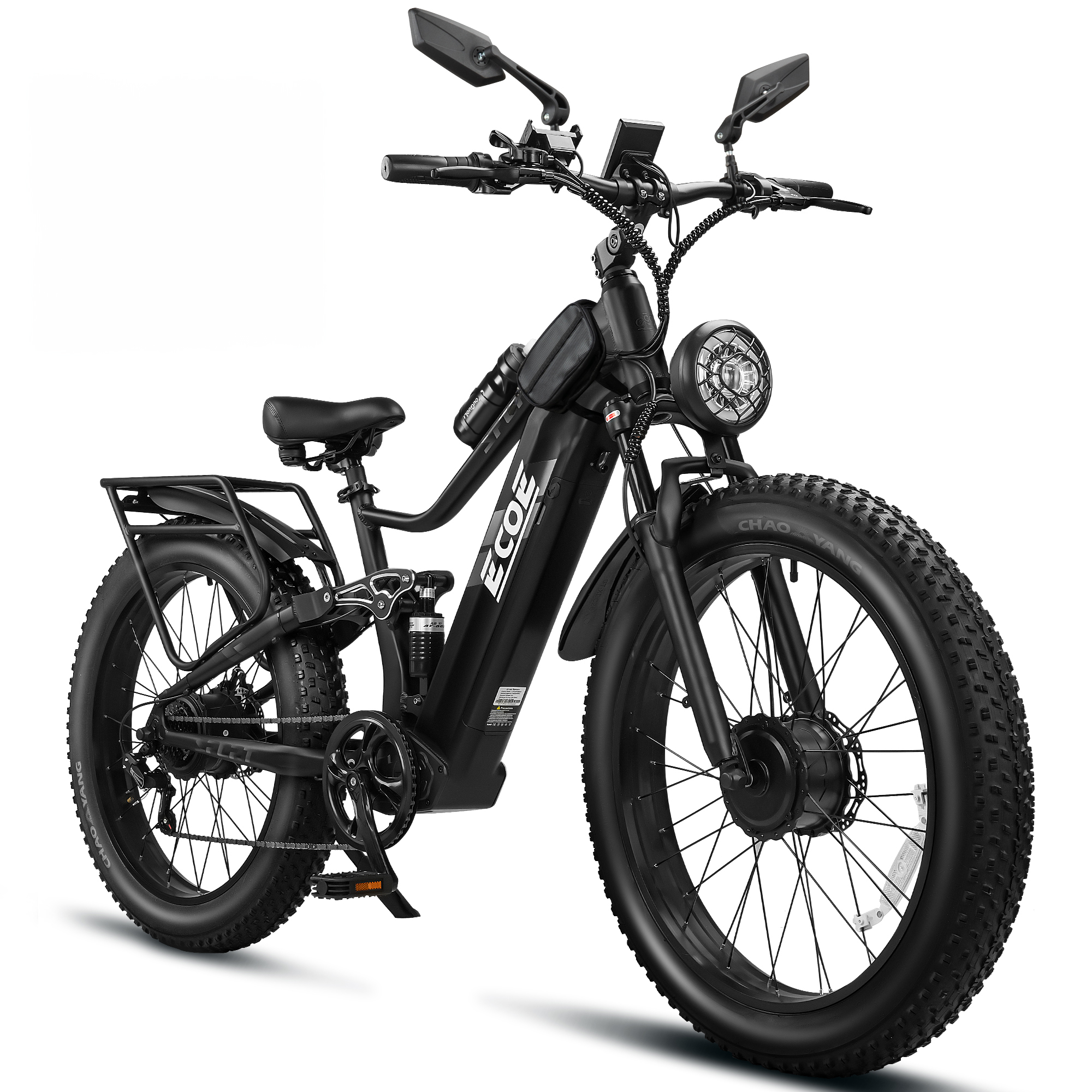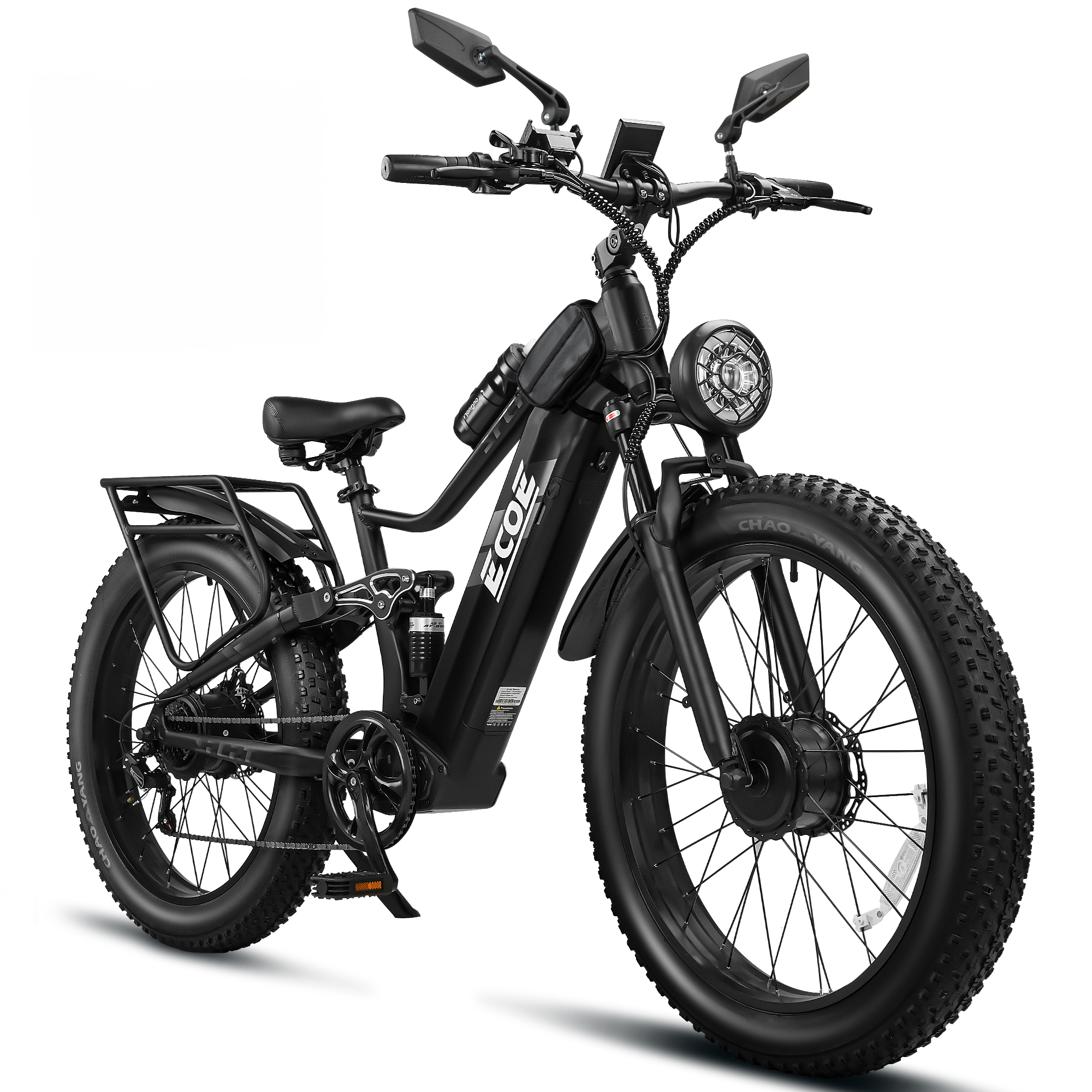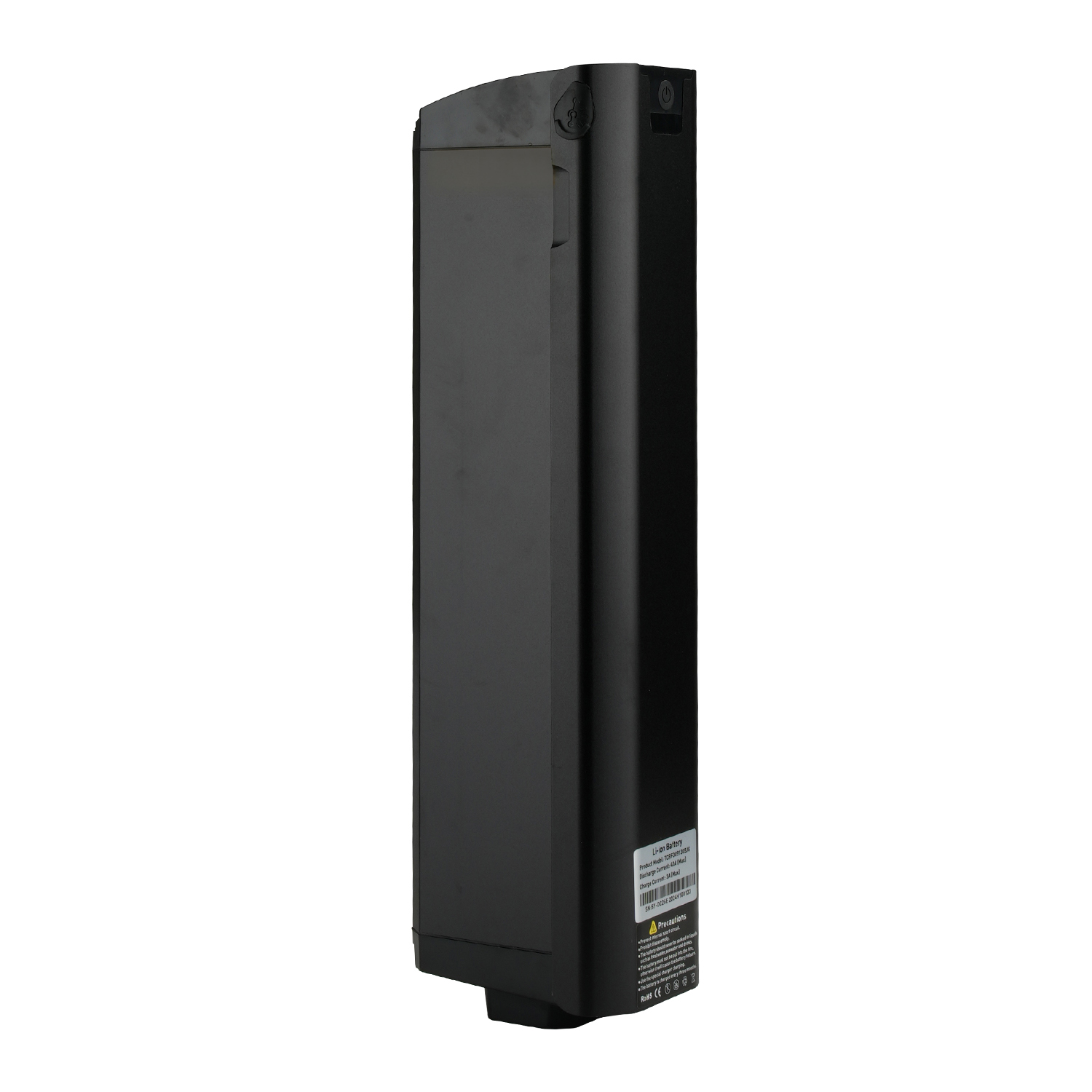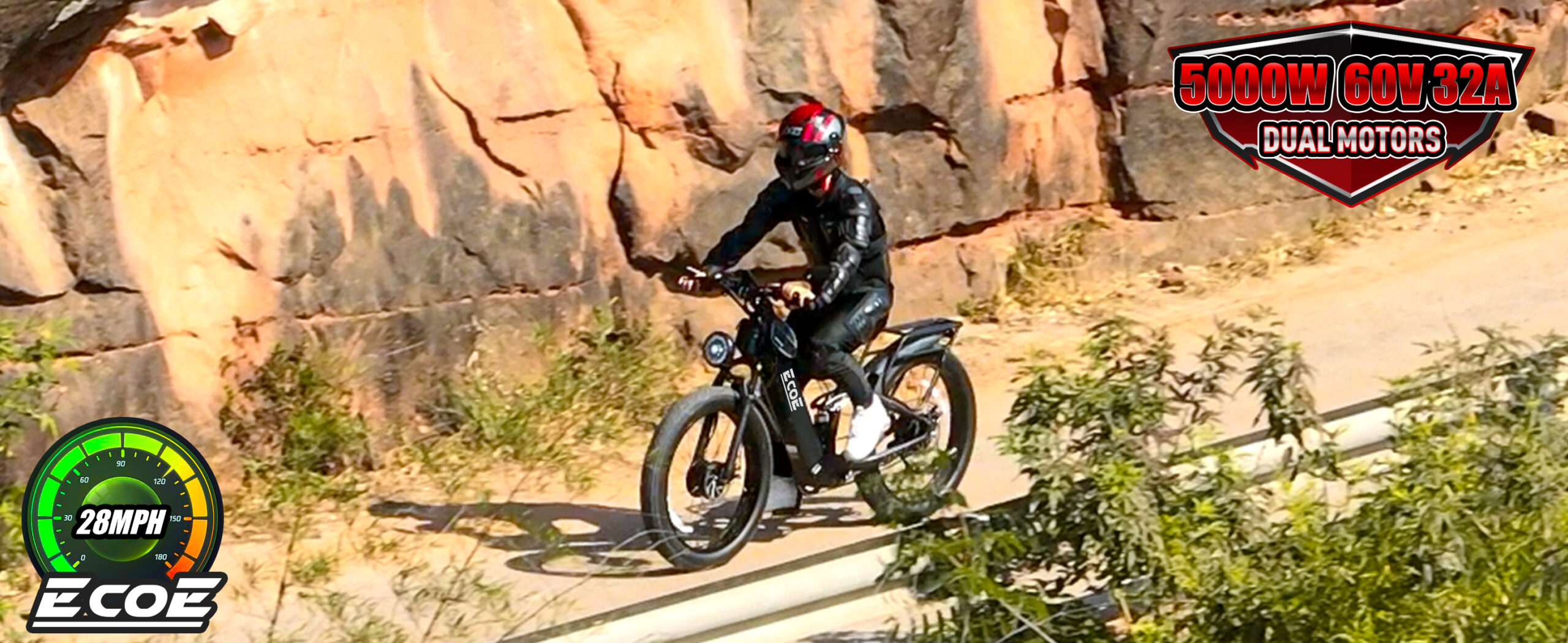
Apr 30, 2025
|
0 comments
Adult Electric Dirt Bikes with Removable Batteries: Convenience Meets Power
When it comes to electric dirt bikes for adults, convenience is more than just a bonus—it’s a necessity. In this article, we explore top electric dirt bikes equipped with removable batteries, combining raw off-road power with practical design. From real user experiences to tested performance. We’ve all been there—dragging an entire bike into the garage just because the battery won’t come out. For weekend warriors and serious trail riders alike, removable batteries are a game-changer. They make charging easier, theft prevention simpler, and long-distance rides more manageable (just swap and go). That’s why in 2025, more riders are specifically looking for dirt e-bikes with removable battery systems. An e-bike enthusiast on an Arizona forum put it best: “I don’t have a garage. I carry the battery upstairs like a laptop—it’s the reason I switched to electric in the first place.” Out on the trail, convenience can mean survival. Removable batteries let you: And with many modern dirt e-bikes offering 60V+ battery systems, you’re not sacrificing power either. The convenience of popping out your battery and charging it in your living room is now a real part of the off-road lifestyle. Here are some of our favorite models combining trail-worthy power and practical battery design: a) Sur-Ron Light Bee X b) Talaria Sting R MX4 c) Ecoe 5000W Dual Motor Electric Bike d) Rawrr Mantis We talked to riders from Oregon to North Carolina, and a common thread emerged—removable batteries are changing how people ride and recharge. One Denver-based user shared: “After long trail days, I just take the battery inside, plug it next to my phone, and by morning I’m ready to ride again. No garage, no hassle.” And it’s not just about comfort—it’s also about safety. Removable battery systems make it easier to prevent overcharging, handle overheating, and even […]
Read more
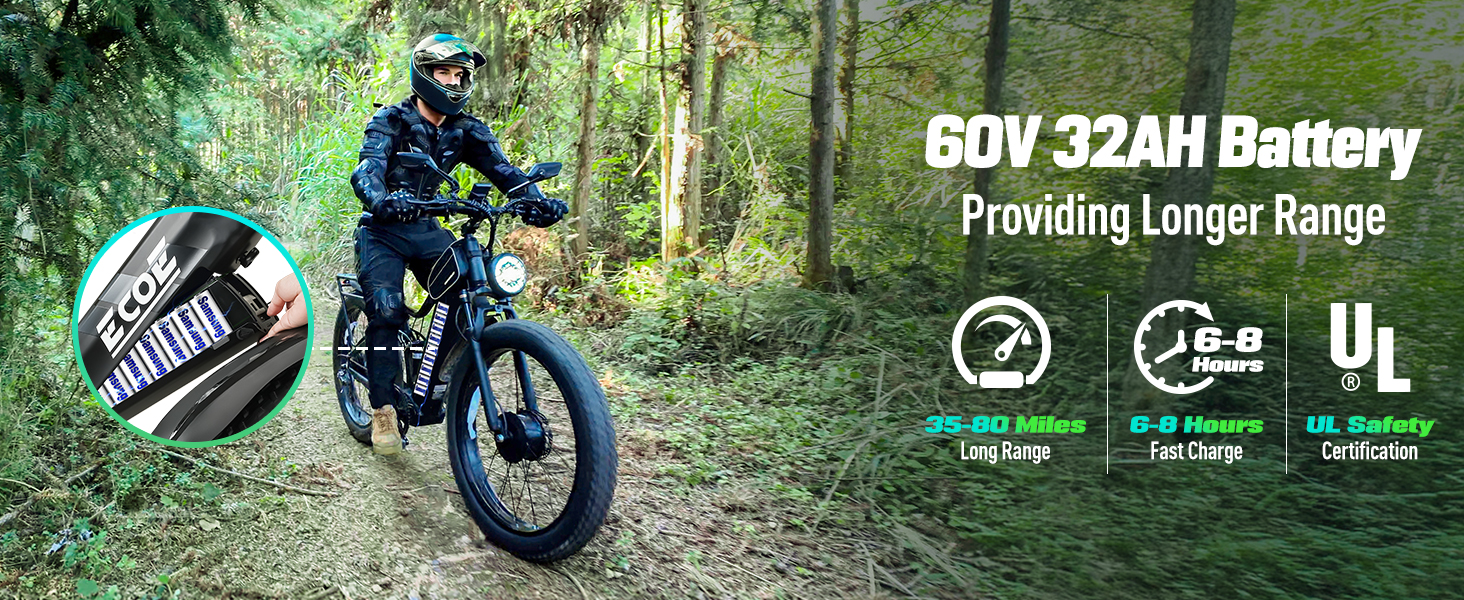
Apr 30, 2025
|
0 comments
The Development History of Electric Bicycle Tires in the 1980s
The EcoE 5000W electric bike Powerful Motor: EcoE is equipped with a 60V 5000W high-speed brushless motor. Due to different loads and road conditions, the electric bike drive system provides adjustable assistance, allowing you to stay healthy, relax, and exercise.Accessories: This electric bike accessory set includes a rearview mirror, water bottle holder and bottle, a sturdy phone mount, and a waterproof phone pouch. The reinforced cargo rack allows you to easily carry extra items needed for your ride. Additionally, if you need more accessories, you can purchase a detachable storage rack, passenger safety seat, trailer, and more.60V 32AH Battery: The bike is equipped with a high-capacity, removable 32AH battery, providing longer range per charge and over 1000 charge cycles. With pedal assist, the fat tire e-bike can travel 35-80 miles, depending on riding mode, load, and terrain. You can also purchase a spare battery for extended trips.Comfort and Versatility: This fat tire electric bike comes with dual front suspension and rear shocks to reduce impact and strain during rides. Its 26-inch wheels, 4-inch tires, and SHIM 7-speed system offer excellent grip across diverse terrains. Front and rear disc brakes ensure safe, responsive stopping, whether on mountain trails or city streets. – I. Technological Development Background In the 1980s, driven by the global energy crisis and emerging environmental awareness, electric bicycles transitioned from experimental prototypes to initial commercialization. Tire technology at this time was still based on traditional bicycle tires but needed to adapt to the higher load, torque, and speed requirements brought by electric assistance. The core developments focused on material reinforcement, structural optimization, and functional enhancement to balance durability, safety, and riding efficiency. II. Key Technological Advances and Timeline Era Technological Progress Material Innovations Design Features Representative Products/Regions Impact and Significance 1980–1983 Traditional bicycle tires were used, but thicker sidewalls were tested to […]
Read more
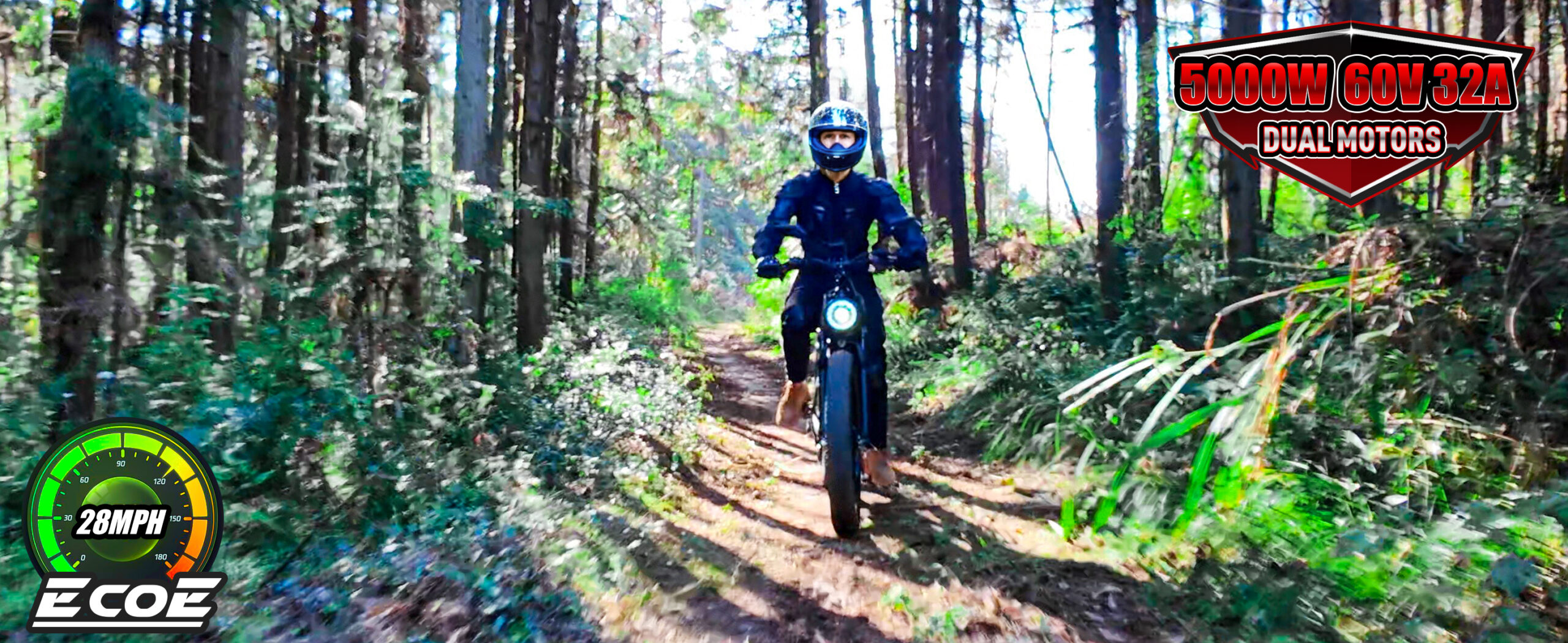
Apr 30, 2025
|
0 comments
History of Electric Bicycle Tire Development (Early 20th Century–1970s)
The EcoE 5000W electric bike Powerful Motor: EcoE is equipped with a 60V 5000W high-speed brushless motor. Due to different loads and road conditions, the electric bike drive system provides adjustable assistance, allowing you to stay healthy, relax, and exercise.Accessories: This electric bike accessory set includes a rearview mirror, water bottle holder and bottle, a sturdy phone mount, and a waterproof phone pouch. The reinforced cargo rack allows you to easily carry extra items needed for your ride. Additionally, if you need more accessories, you can purchase a detachable storage rack, passenger safety seat, trailer, and more.60V 32AH Battery: The bike is equipped with a high-capacity, removable 32AH battery, providing longer range per charge and over 1000 charge cycles. With pedal assist, the fat tire e-bike can travel 35-80 miles, depending on riding mode, load, and terrain. You can also purchase a spare battery for extended trips.Comfort and Versatility: This fat tire electric bike comes with dual front suspension and rear shocks to reduce impact and strain during rides. Its 26-inch wheels, 4-inch tires, and SHIM 7-speed system offer excellent grip across diverse terrains. Front and rear disc brakes ensure safe, responsive stopping, whether on mountain trails or city streets. – 1. Technical Background and Core Features From the early 20th century to the 1970s, electric bicycle tire technology remained in its infancy, relying entirely on traditional bicycle designs without independent R&D tailored to electric drive systems. Solid rubber tires dominated, gradually giving way to pneumatic tires later, though technological progress was slow, primarily meeting basic riding needs. 2. Key Development Stages and Technological Evolution Time Technical Features Materials Representative Products/Models Core Advantages Driving Factors Early 20th C.–1940s Solid tires dominate:– Simple structure, no cord layers– Smooth tread with minimal patterns Natural rubber– Wooden rims reinforced with metal Early electric assist bikes (e.g., Japanese modified bicycles) Extremely low […]
Read more
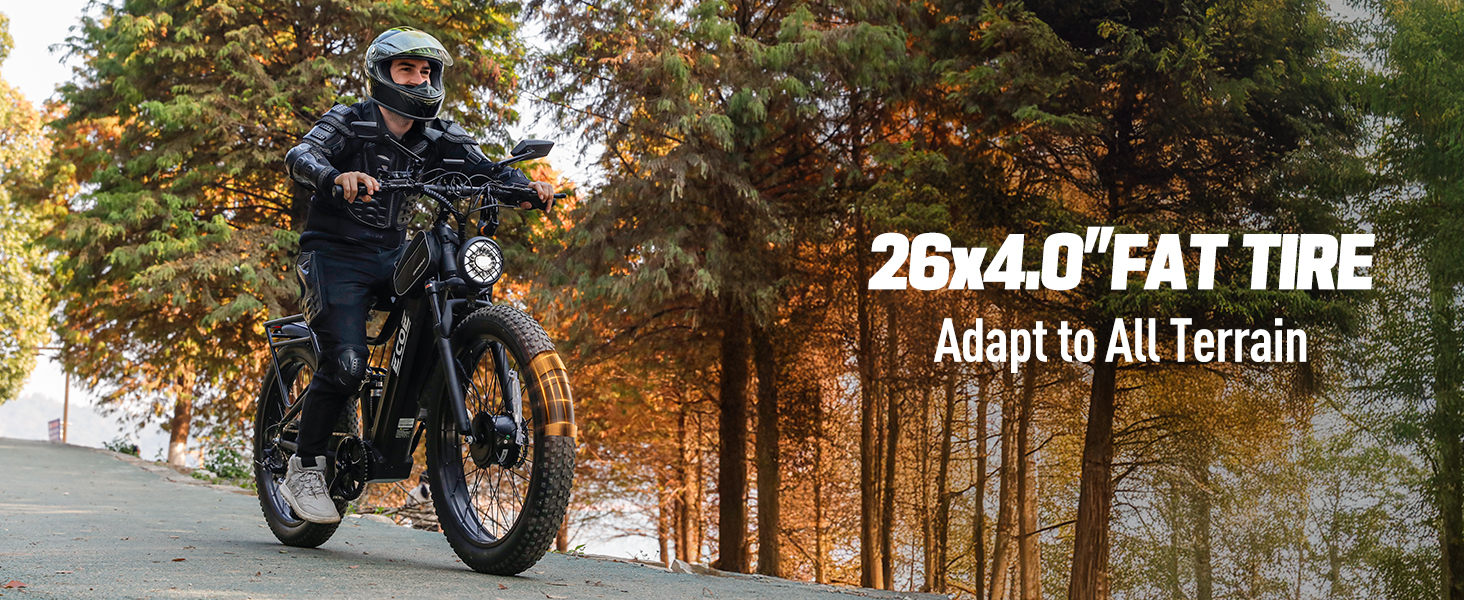
Apr 30, 2025
|
0 comments
Eco-Friendly Off-Roading: Best Electric Dirt Bikes for Sustainable Adventure
In 2025, as environmental awareness continues to soar, off-road riding is also quietly undergoing a transformation. This article will start from real life and take you to see which Electric Dirt Bikes for Adults can not only bring thrilling mountain adventures but also reduce carbon emissions and truly achieve green travel. A few years ago, we were still often riding gas-guzzling motorcycles with deafening throttles in the mountains, enjoying the adrenaline rush from speed while being choked by the exhaust fumes. Until one time, while camping at a remote campsite in a national forest, we heard a mother complain, “My child can’t breathe. It’s all because of the smell from your motorcycles.” At that moment, we suddenly realized it was time to explore nature in a different way. Thus, Electric Dirt Bikes for Adults entered our horizon. “Environmental protection” is easy to say, but truly achieving it is another matter. We began to focus on models that use recyclable batteries, energy-efficient motors, and have suspension and tread designs suitable for off-road, unpaved surfaces. For us, “environmental protection” is not just about low carbon emissions—it also includes less noise, fewer maintenance hassles, and even less disturbance to natural landscapes. A fellow rider from Colorado shared on Reddit, “After switching to an electric dirt bike, I can ride into the mountains with a clear conscience, without worrying about disturbing deer herds and campers.” After multiple test rides, we have selected several models particularly suitable for eco-conscious riders: That day, we packed water and energy bars, leaving the gas bike at home. We rode the electric dirt bikes into the mountains for the whole journey. The slopes were steep and the roads were slippery, with sunlight. The most obvious feeling was the quietness. You could hear the birds chirping, the wind blowing, and […]
Read more
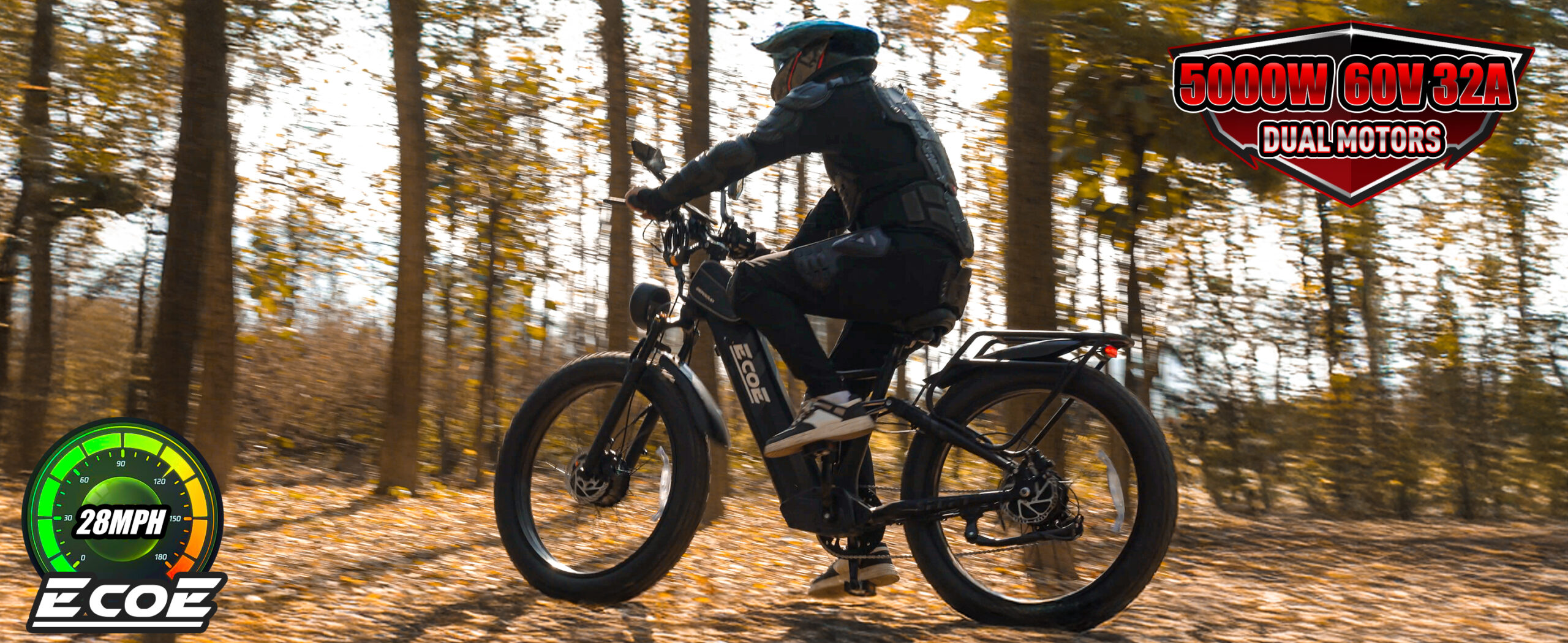
Apr 29, 2025
|
0 comments
Best Lightweight Electric Dirt Bikes for Adults: Easy Handling on Rough Terrain
Looking for an electric dirt bike that won’t throw out your back or demand a bodybuilder’s strength to maneuver? We’ve been there. In this guide, we explore the best lightweight electric dirt bikes for adults in 2025—perfect for forest trails, mountain paths, or sandy terrain. Easy to lift, responsive on uneven ground, and surprisingly fun to ride. We learned this the hard way. It was a crisp Saturday morning up in Lake Tahoe when Mark’s 200-pound electric dirt bike lost traction on a steep, muddy incline. Not only did he drop it—he couldn’t lift it alone. The rest of us had to hike down and help, and by the time we got the thing upright, we were all out of breath and patience. That day changed how we looked at dirt bikes. Weight isn’t just about portability. On technical terrain, it’s about control, safety, and how much fun you actually have. So we started trying out lighter options—and honestly, they changed everything. Top Lightweight Electric Dirt Bikes in 2025 Here are our top picks for lightweight electric dirt bikes that still pack a punch. 1. Sur-Ron Light Bee X 2. Talaria Sting R MX4 (Lightweight Edition) 3. Ecoe 5000W Dual Motor Electric Bike Price: $1,499 Top Speed: 28 mph (can be unlocked for more) Why We Like It: The full suspension and 26” x 4” fat tires make it one of the best bang-for-buck options. Plus, that 60V 32AH battery gives you serious range. Just one look at the real-time LCD display and you’ll feel like you’re riding a high-end machine. This one comes from Ecoe, a rising brand focused on sustainable but performance-driven urban mobility. 4. MotoTec 48v Pro Electric Dirt Bike (Lithium Edition) 5. Kuberg Freerider We’ve taken some of these bikes through serious trails—from Tahoe’s rocky elevation […]
Read more
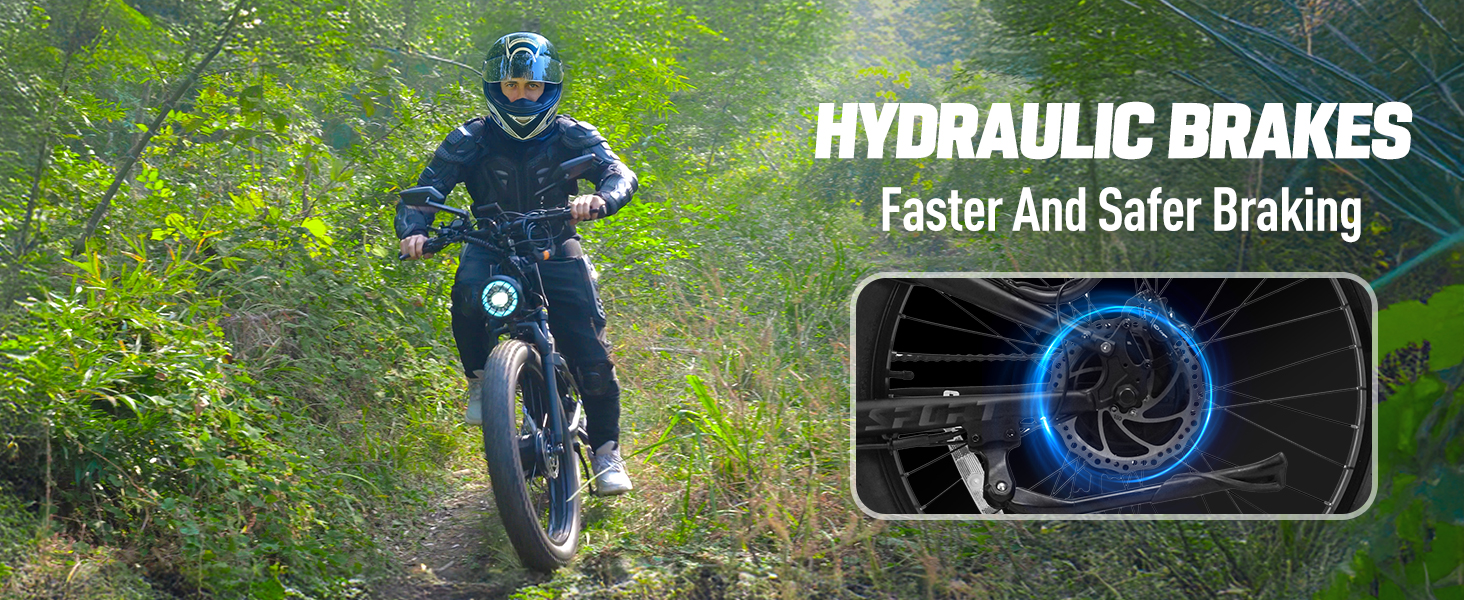
Apr 29, 2025
|
0 comments
History of Electric Bicycle Tire Development (Early 20th Century to Present)
The EcoE 5000W electric bike Powerful Motor: EcoE is equipped with a 60V 5000W high-speed brushless motor. Due to different loads and road conditions, the electric bike drive system provides adjustable assistance, allowing you to stay healthy, relax, and exercise.Accessories: This electric bike accessory set includes a rearview mirror, water bottle holder and bottle, a sturdy phone mount, and a waterproof phone pouch. The reinforced cargo rack allows you to easily carry extra items needed for your ride. Additionally, if you need more accessories, you can purchase a detachable storage rack, passenger safety seat, trailer, and more.60V 32AH Battery: The bike is equipped with a high-capacity, removable 32AH battery, providing longer range per charge and over 1000 charge cycles. With pedal assist, the fat tire e-bike can travel 35-80 miles, depending on riding mode, load, and terrain. You can also purchase a spare battery for extended trips.Comfort and Versatility: This fat tire electric bike comes with dual front suspension and rear shocks to reduce impact and strain during rides. Its 26-inch wheels, 4-inch tires, and SHIM 7-speed system offer excellent grip across diverse terrains. Front and rear disc brakes ensure safe, responsive stopping, whether on mountain trails or city streets. – 1. Early Exploration Phase (Early 20th Century–1980s) In the early days, electric bicycles were mostly modified from traditional bicycles, with tire technology following standard bicycle norms to meet basic riding needs. Time Technical Features Materials Representative Products/Models Core Advantages Driving Factors Early 20th C.–1970s Solid or pneumatic tires with simple structures Natural rubber, single-layer cord Early electric assist bikes (e.g., Japanese assist bicycles) Low cost, easy maintenance Initial commercialization of e-bikes, simple demands 1980s More wear-resistant rubber compounds, deeper tread patterns Synthetic rubber + cotton/nylon cords Early Yamaha PAS series (Japan) Improved wear resistance, suitable for light loads Increasing load requirements for e-bikes […]
Read more
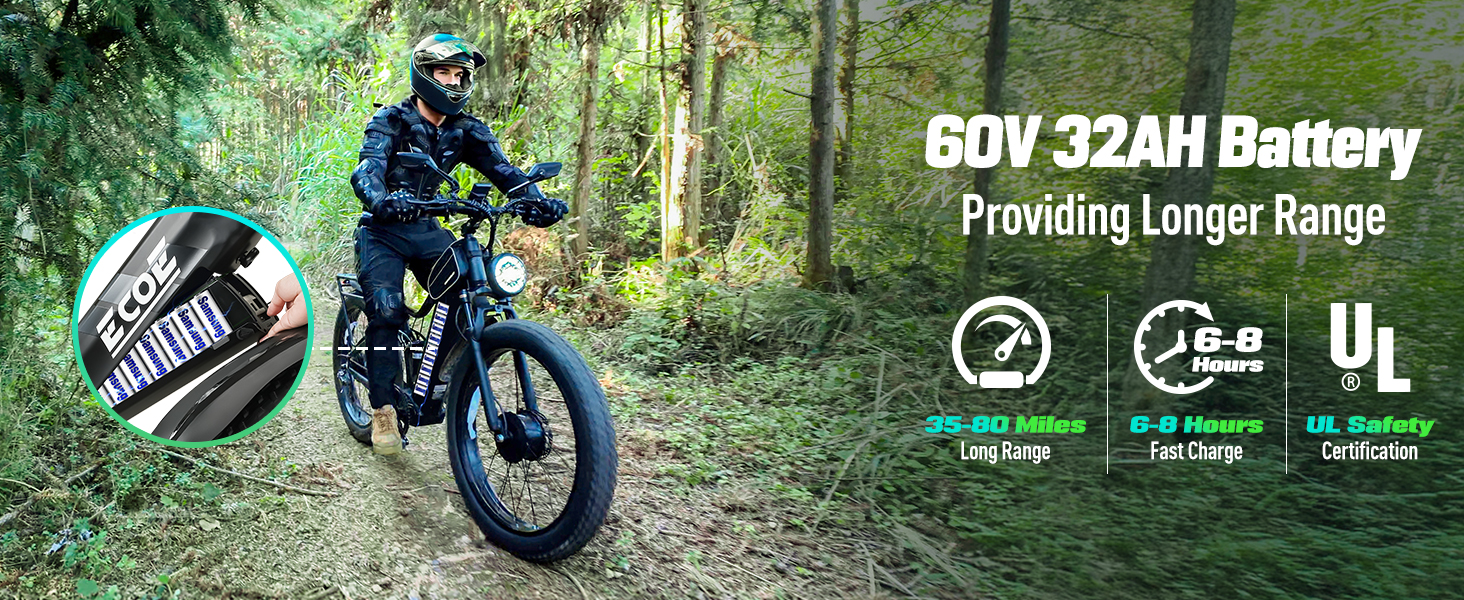
Apr 29, 2025
|
0 comments
History of Electric Bicycle Motor Technology Development (Post-2003)
The EcoE 5000W electric bike Powerful Motor: EcoE is equipped with a 60V 5000W high-speed brushless motor. Due to different loads and road conditions, the electric bike drive system provides adjustable assistance, allowing you to stay healthy, relax, and exercise.Accessories: This electric bike accessory set includes a rearview mirror, water bottle holder and bottle, a sturdy phone mount, and a waterproof phone pouch. The reinforced cargo rack allows you to easily carry extra items needed for your ride. Additionally, if you need more accessories, you can purchase a detachable storage rack, passenger safety seat, trailer, and more.60V 32AH Battery: The bike is equipped with a high-capacity, removable 32AH battery, providing longer range per charge and over 1000 charge cycles. With pedal assist, the fat tire e-bike can travel 35-80 miles, depending on riding mode, load, and terrain. You can also purchase a spare battery for extended trips.Comfort and Versatility: This fat tire electric bike comes with dual front suspension and rear shocks to reduce impact and strain during rides. Its 26-inch wheels, 4-inch tires, and SHIM 7-speed system offer excellent grip across diverse terrains. Front and rear disc brakes ensure safe, responsive stopping, whether on mountain trails or city streets. – Since 2003, electric bicycle motor technology has undergone a comprehensive upgrade from large-scale mass production to intelligent and high-efficiency systems. During this period, brushless DC motors (BLDC) completely replaced brushed motors as the mainstream, while hub motors and mid-drive motors formed a differentiated market structure. The collaborative innovation of lithium-ion batteries and intelligent controllers drove performance breakthroughs, with policy regulations and global competition accelerating technological iteration. Below is a detailed analysis of key development stages and technological advancements: Key Development Stages Development History Table Time Key Events and Technological Advances Motor Technology Characteristics 2003 Suzhou Bafang Motor established, driving brushed motor adoption in low-end markets; brushless motor market share exceeded 30% 2. – Coexistence […]
Read more
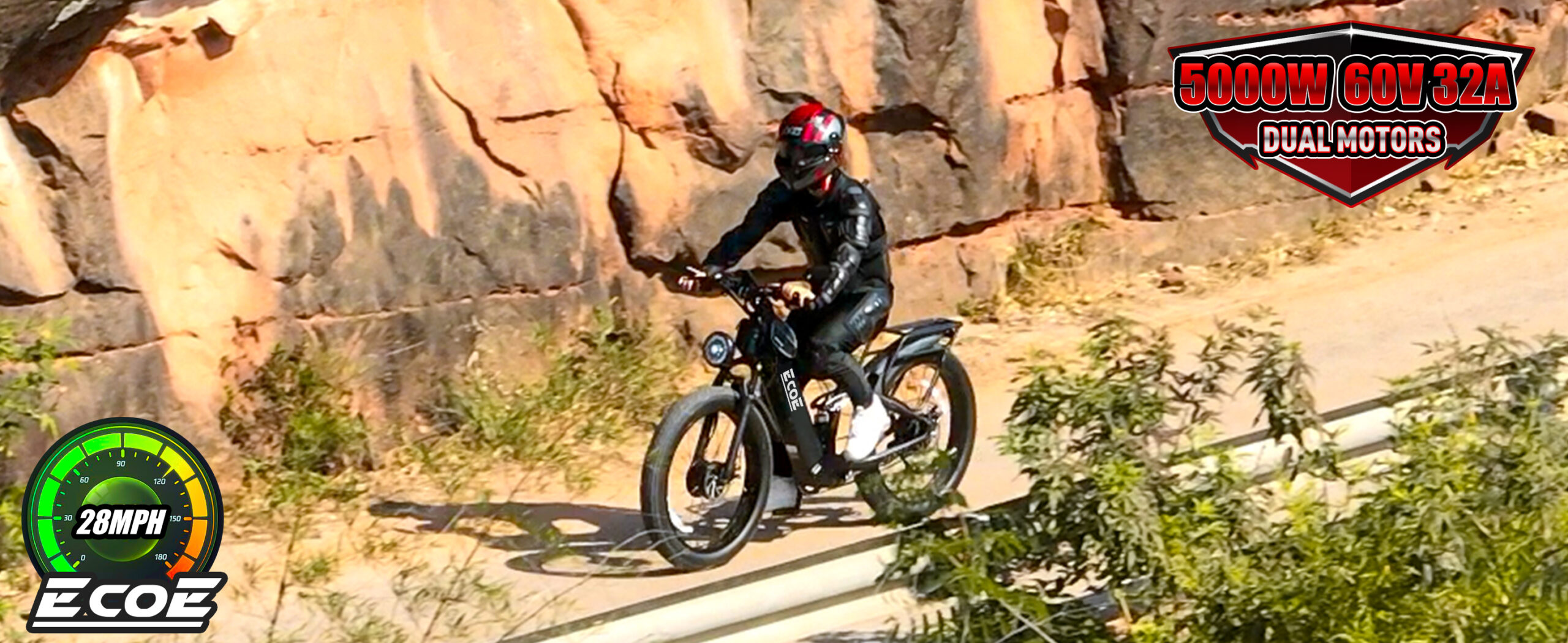
Apr 29, 2025
|
0 comments
Electric Dirt Bikes for Adults Under $3000: Top Value-Packed Options
Looking for an electric dirt bike that won’t blow your budget but still delivers real off-road performance? You’re not alone. We went through dozens of options under $3000 and test-rode many of them ourselves. This article shares our top picks—based on real-world riding experience, features, and user reviews—to help you find the best value-packed electric dirt bikes in 2025. It all started when our buddy James wiped out his aging gas dirt bike during a weekend trip to Moab. After that, we all started rethinking our rides. We wanted something cleaner, quieter, and honestly, less maintenance. But here’s the deal: most high-performance electric dirt bikes can cost north of $5000. That was out of the question for us. So, we made a pact—to each find an electric dirt bike under $3000 that didn’t feel like a compromise. What surprised us? We found more than a few that didn’t just meet the mark—they absolutely shredded. Top 5 Electric Dirt Bikes Under $3000 1. Ecoe 5000W Dual Motor Electric Bike 2. Talaria Sting MX3 3. Razor MX650 (Modded for Adults) 4. Apollo RFN Ares Electric Dirt Bike 5. Sur-Ron X Light Bee (Used) We didn’t just go by specs on paper. We took these bikes through their paces—up rocky trails in Colorado, over sand dunes in Nevada, and even some light snow terrain in Oregon. What we cared about most was how they felt in real-world riding: did the power delivery feel responsive? Did we trust the suspension on a fast downhill? Would we actually want to ride this thing every weekend? Across the board, range, comfort, and build quality were our top evaluation points. Budget-friendly doesn’t have to mean basic—and these bikes prove that. If you’re shopping in this price range, here’s what to prioritize: There’s no single “best” e-dirt bike […]
Read more
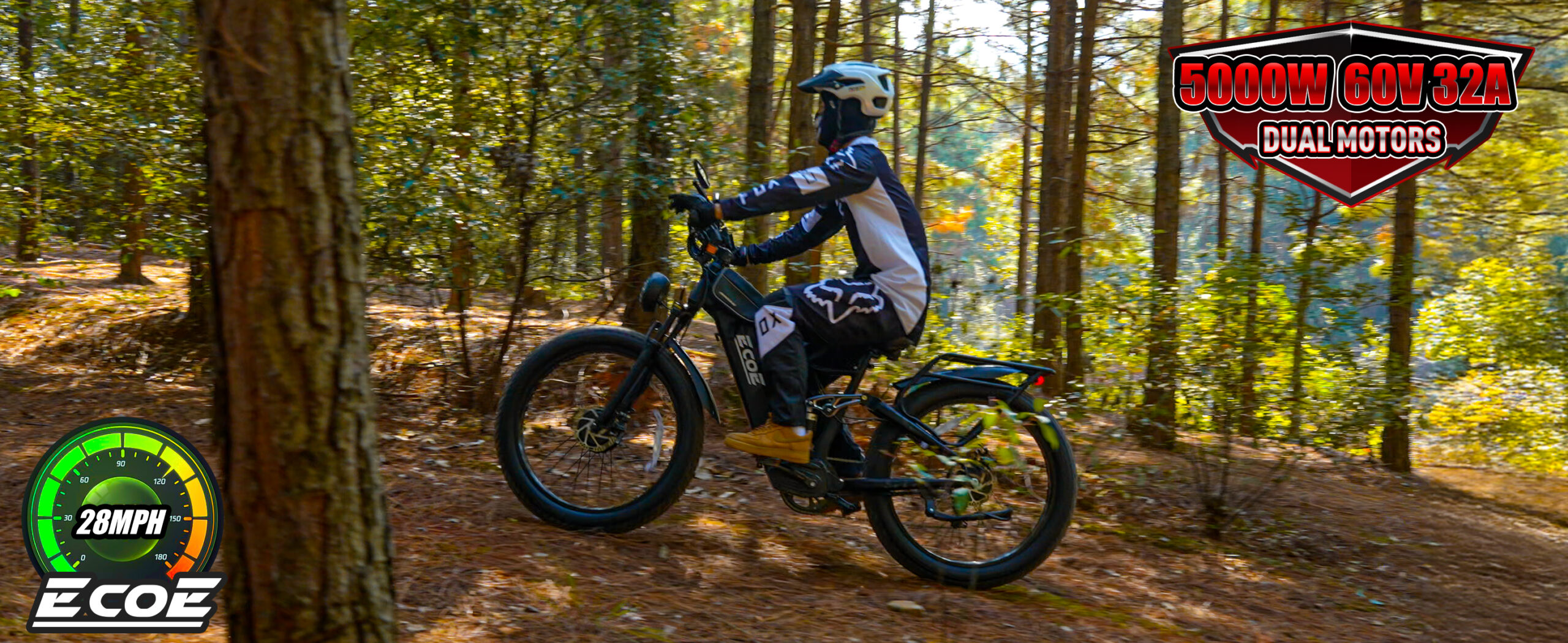
Apr 28, 2025
|
0 comments
Best Long-Range Electric Dirt Bikes for Adults: Ride Farther, Explore More
Long-range Electric Dirt Bikes for Adults are quickly becoming the top choice for adult riders. They are not only environmentally friendly and quiet but also capable of taking us to more distant and adventurous terrains. This article, written from a first-person perspective, will take you on a journey to experience several popular long-range Electric Dirt Bikes for Adults, share feedback from real users abroad, and explore which one best suits your adventurous spirit. We began seriously considering switching to a long-range Electric Dirt Bike for Adults after a weekend camping trip last fall. As we rode our old 1500W electric motorcycle through the mountains and forests, the battery warning light came on before noon, and we had barely entered the depths of the forest trail. To be honest, the anxiety of running out of power was more unsettling than not having food. On the way back, we had to push the bike up a slope for 3 kilometers, and it was at that moment that we made up our minds: never to settle for less again, the range must be sufficient! In the following months, we tested several popular long-range Electric Dirt Bikes for Adults on the market, including: Surron Light Bee X (2025 Model) Its 60V battery with a capacity of 38AH can easily achieve a tested range of 60-70 miles, especially excelling in mixed terrains. A user on Reddit said, “I started from the canyon and circled around two entire lakes without the battery dropping to red!” We later verified this ourselves—the range is indeed reliable. Talaria Sting R MX3 This model is relatively more focused on racing. Its 48V battery has a moderate capacity, but it can still run over 45 miles in energy-saving mode, making it suitable for mild off-road routes. The handling is very agile, […]
Read more
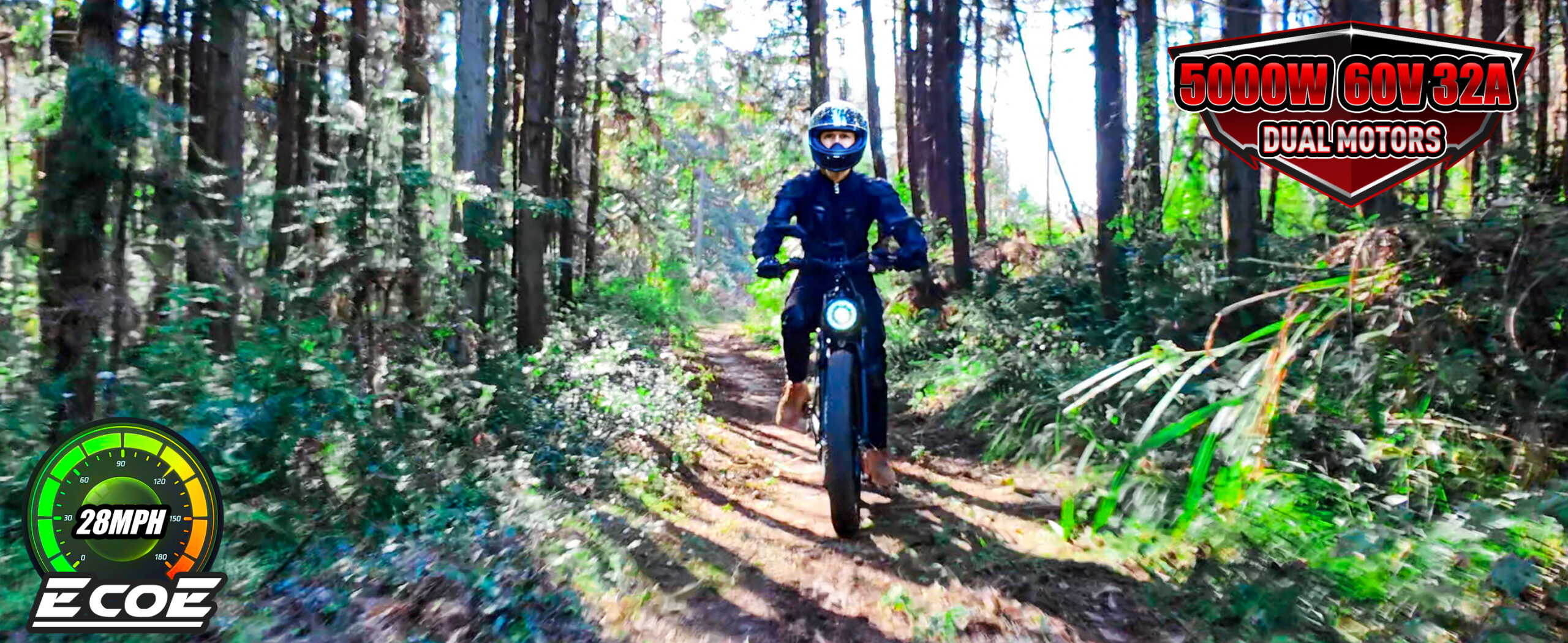
Apr 28, 2025
|
0 comments
History of Electric Bicycle Motor Technology Development (Late 1990s–2003)
The EcoE 5000W electric bike Powerful Motor: EcoE is equipped with a 60V 5000W high-speed brushless motor. Due to different loads and road conditions, the electric bike drive system provides adjustable assistance, allowing you to stay healthy, relax, and exercise.Accessories: This electric bike accessory set includes a rearview mirror, water bottle holder and bottle, a sturdy phone mount, and a waterproof phone pouch. The reinforced cargo rack allows you to easily carry extra items needed for your ride. Additionally, if you need more accessories, you can purchase a detachable storage rack, passenger safety seat, trailer, and more.60V 32AH Battery: The bike is equipped with a high-capacity, removable 32AH battery, providing longer range per charge and over 1000 charge cycles. With pedal assist, the fat tire e-bike can travel 35-80 miles, depending on riding mode, load, and terrain. You can also purchase a spare battery for extended trips.Comfort and Versatility: This fat tire electric bike comes with dual front suspension and rear shocks to reduce impact and strain during rides. Its 26-inch wheels, 4-inch tires, and SHIM 7-speed system offer excellent grip across diverse terrains. Front and rear disc brakes ensure safe, responsive stopping, whether on mountain trails or city streets. – The late 1990s to 2003 marked a critical transition for electric bicycle motor technology, as it evolved from laboratory prototypes to large-scale commercialization. During this period, brushless DC (BLDC) motors gradually matured and became the mainstream, while the technological divergence between hub motors and mid-drive motors accelerated. Advancements in battery technology (e.g., nickel-metal hydride batteries) and controllers further enhanced motor performance. Here is a detailed timeline: 1. Breakthroughs and Commercialization of Brushless DC Motors 2. Divergence Between Hub Motors and Mid-Drive Motors 3. Synergistic Advances in Batteries and Controllers 4. China’s Market Surge and Technological Localization Development History Table Time Key Events and Technological Advances Motor Technology […]
Read more

